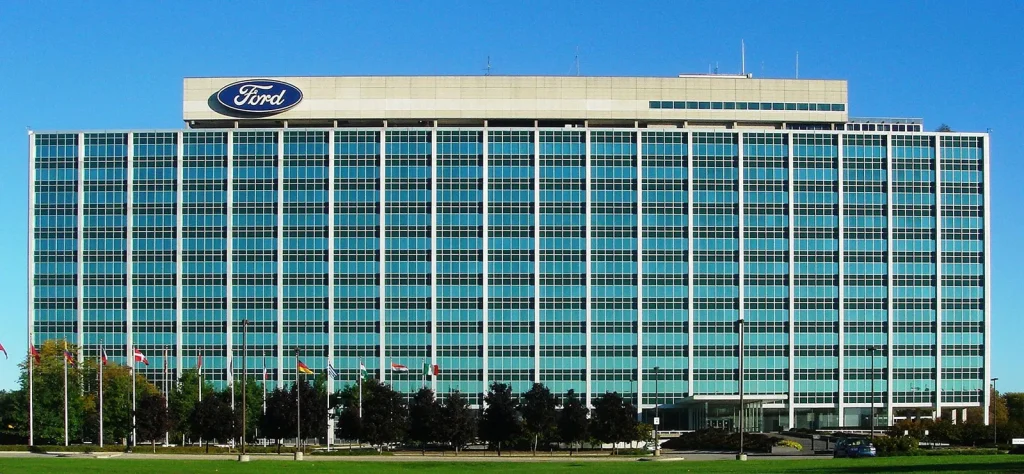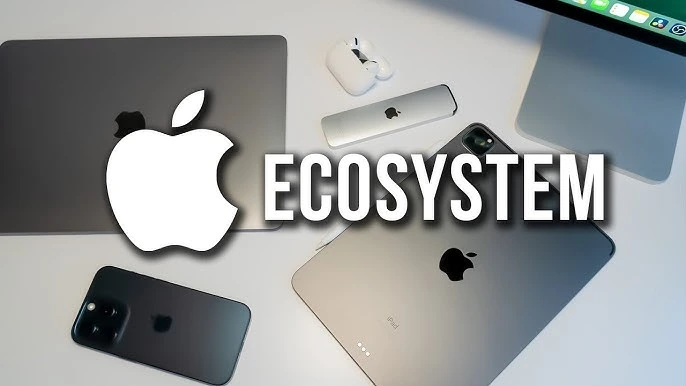
The Beautiful Prison We All Walked Into
In the world of consumer technology, few brands spark as much loyalty—and debate—as Apple. Millions love Apple products. Millions also complain about them. Yet almost everyone who buys an iPhone, a MacBook, or AirPods ends up buying more.
This isn’t an accident. It’s the plan. It’s the masterstroke that turned Apple from a struggling computer company in the 90s to the first $3 trillion company in history.
The secret? The Ecosystem.
A web of hardware, software, services, psychology, and social influence—so cleverly connected that switching feels like losing a limb.
This article isn’t just about Apple’s products—it’s about how Apple designed a golden cage, how we walked right in, and why we mostly don’t want to leave.
What Is the Apple Ecosystem?
When people say “Apple Ecosystem,” they don’t mean just having an iPhone in your pocket. They mean an invisible network of devices and services that feel like extensions of each other—and of you.
Definition:
The Apple Ecosystem is the sum of Apple’s devices (hardware), operating systems (software), apps, cloud services, accessories, and the experience of how they work together to create a seamless, sticky digital life.
The Core Components
Hardware:
- iPhone (the hub)
- MacBook (productivity)
- iPad (portability)
- Apple Watch (health & notifications)
- AirPods (audio magic)
- HomePod (smart home)
- Apple TV (streaming & gaming)
Software & Operating Systems:
- iOS (iPhone)
- macOS (Mac)
- watchOS (Watch)
- iPadOS (iPad)
- tvOS (Apple TV)
Services & Subscriptions:
- iCloud—stores photos, files, backups
- Apple Music—curated music streaming
- Apple TV+—exclusive shows and movies
- Apple Arcade—family-friendly gaming
- Apple Fitness+—workouts linked to your Watch
- Apple Pay & Apple Card—finance integrated with your devices
- App Store—controlled distribution
Cross-Device Features:
- Handoff—start an email on your iPhone, finish on your Mac
- Universal Clipboard—copy on one device, paste on another
- AirDrop—instant local sharing
- Continuity Camera—use your iPhone camera for your Mac
- iMessage & FaceTime—exclusive messaging, calls
- Find My—find lost devices, even offline
What Makes This Different?
Individually, these aren’t unique ideas. Google, Microsoft, and Samsung—all have versions.
But no other company
- Controls the hardware and software so tightly.
- Owns the entire supply chain from chip to cloud.
- Designs every piece to feel like a family.
- Knows exactly how to sell the story that “it just works.”
Apple’s ecosystem is not just integration—it’s integration that’s invisible. That’s what makes it magical—and dangerous if you care about freedom to switch.
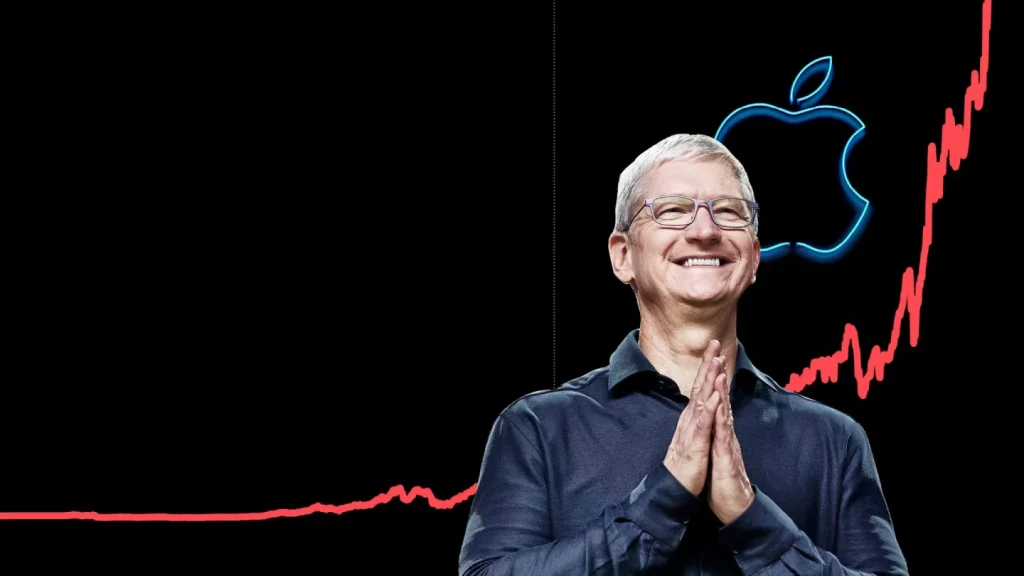
The Origin Story—How The Trap Was Built
Back in the Garage: Apple Before the Ecosystem
In the late 1970s, Apple’s first computers (Apple I, Apple II) were stand-alone boxes. There was no ecosystem. Even the first Macs (1984) were just better designed PCs.
By the mid-90s, Apple was bleeding cash. Microsoft Windows was crushing it. Apple was weeks from bankruptcy.
Then Steve Jobs returned.
Steve Jobs’ Masterstroke: Control Everything
Jobs believed something radical: if Apple made all the pieces, the result would be better than piecing together parts from multiple vendors.
Key decisions:
- Tight hardware/software integration: No licensing macOS to other manufacturers.
- Premium pricing: Not chasing low-cost volume.
- Design first: Products had to be beautiful.
- Customer experience above all.
The iPod Era: The First Hook
When Apple launched the iPod in 2001, it was just a music player—but iTunes made it magical.
People bought songs legally and synced them easily. The iPod made sense with a Mac. Already, Apple was teaching people, “Buy our other stuff—it works better together.”
The iPhone: The Real Trap
The iPhone, unveiled in 2007, was more than a phone—it was a computer in your pocket. But more importantly, it became the hub for all other products.
Then came the App Store (2008). Now, developers were locked into Apple’s world too.
Then came the iPad (2010), the Watch (2015), and AirPods (2016). Each new device wasn’t just useful—it relied on the iPhone.
The more you bought, the smoother life got. The smoother it got, the harder it was to leave.
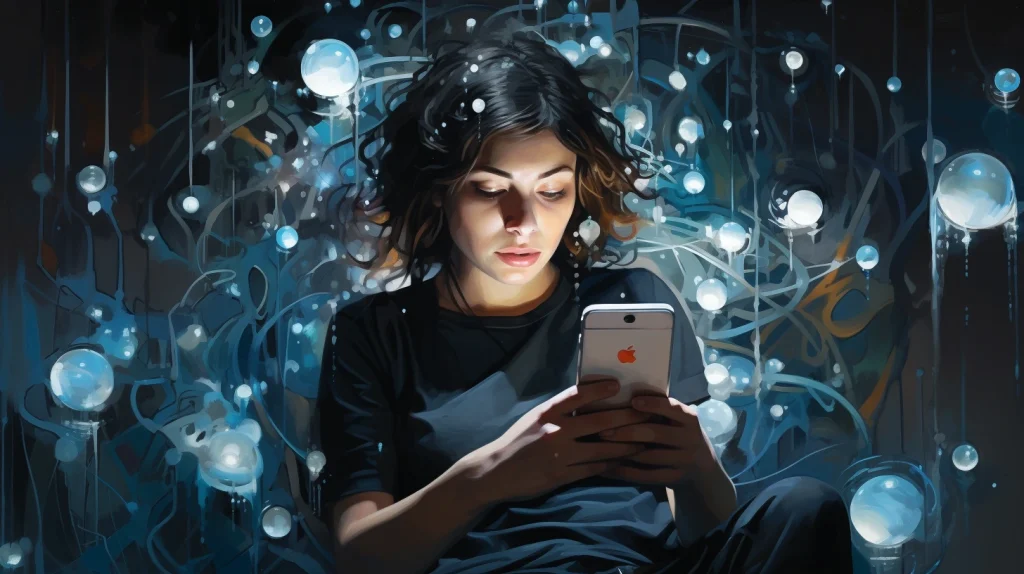
The Mechanics — How Apple Keeps You Hooked
1️⃣ The Hub and Spoke
Picture the iPhone as the hub. Everything else is a spoke: watch, AirPods, Mac, HomePod, TV, accessories.
If you drop the iPhone, the spokes wobble.
- No iPhone? Apple Watch is useless.
- No iPhone? No seamless iMessage.
- No iPhone? FaceTime group calls are gone.
2️⃣ Seamless Continuity
Apple’s magic is how it blurs device lines:
- Copy a photo on your iPhone → paste it in a Keynote on your Mac.
- Take a call on your Mac when your iPhone is in another room.
- AirDrop files instantly between devices—no cables, no login.
- Your AirPods know what you’re using and switch audio automatically.
Each tiny convenience removes friction. Switching to non-Apple? Friction comes back. And we hate friction.
3️⃣ Proprietary Advantages
Apple uses proprietary tech that works best inside its garden.
- AirDrop: No real equivalent between iPhone and Android.
- Handoff: Google tries it with Chrome, but it’s not OS-wide.
- Apple Silicon: M1, M2, and M3 chips run iOS apps on Mac—no Android laptop can run Android apps natively at this level.
- MagSafe: Magnetic charging and accessories only for iPhones.
4️⃣ Social Stickiness
The green bubble shame is real. In America, teens literally bully other teens for Android bubbles in group chats. iMessage is a subtle social lever.
FaceTime group calls? All iPhones.
AirDrop at parties? iPhone only.
Apple exploits human psychology: FOMO, peer pressure, and status.
5️⃣ Subscriptions: The Monthly Trap
Once you buy devices, you pay to keep them useful:
- iCloud for storage—because 5GB free fills up instantly.
- Apple Music—easy if you have a HomePod.
- Apple Fitness+—perfect if you have a Watch.
- Apple TV+—bundled with new devices.
Every $9.99/month pulls you deeper. The cost to switch is not just hardware—it’s cancelling half a dozen services.
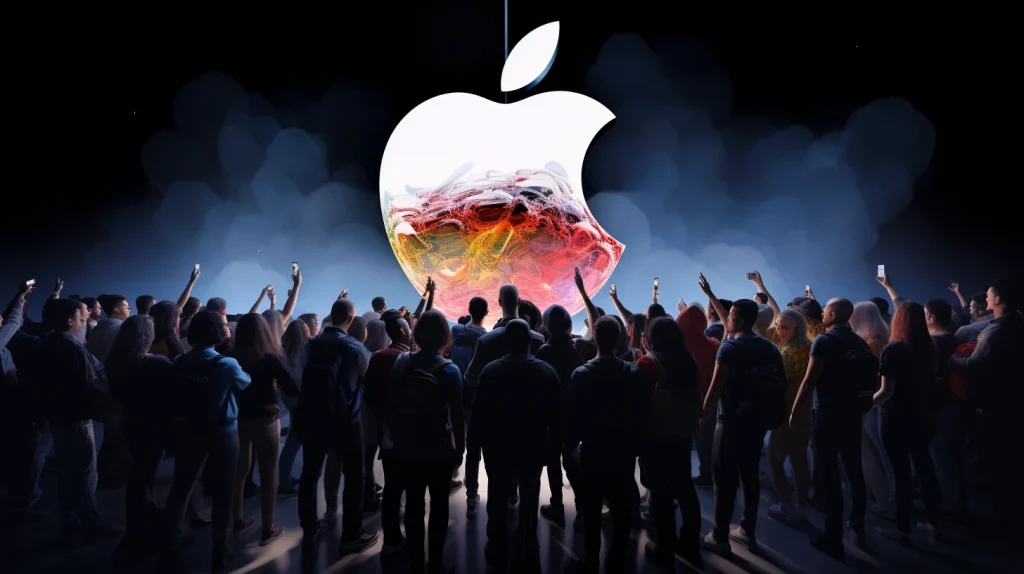
The Human Psychology Behind It
Convenience vs Freedom
Humans crave convenience over freedom. Apple knows this.
Ask yourself, why do you use the same password manager, same cloud, and same devices? Because switching is work.
Psychologists call this status quo bias”—we stick with what works, even if something else might be cheaper or better.
The “Sunk Cost” Trap
If you’ve spent $3,000 on Apple gear, plus subscriptions, plus your photos, messages, and data—you feel stuck.
You could switch to Android or Windows. But… you’d lose so much time, data, and familiarity. So you stay.
Tribal Identity
Apple users feel like a club. “I’m a Mac person.” “I’m an iPhone person.” This is tribal branding at its peak.
What Happens When You Try to Leave
Here’s what it looks like in the real world:
1️⃣ You switch to Android.
2️⃣ You realize iMessage group chats break.
3️⃣ Your AirPods work, but there is no instant pairing or auto-switching.
4️⃣ Your Apple Watch is now a fancy paperweight.
5️⃣ You pay Google for storage. Now you manage two clouds.
6️⃣ You miss AirDrop—now you email yourself files again.
Most people crawl back in a year or two.
Is The Trap Ethical?
Regulators don’t think so.
- The EU forced Apple to switch to USB-C.
- New EU laws force Apple to allow third-party app stores.
- Antitrust lawsuits target App Store fees.
- The US Justice Department is watching too.
Apple says: it’s for privacy, security, and quality. Critics say: it’s for control and profit.
Competitors Tried — But Failed
Google, Samsung, and Microsoft—all tried to build ecosystems:
- Google: Pixel phones, Nest speakers, ChromeOS, Google Drive. But they lack hardware design control.
- Samsung: Galaxy phones, tablets, and TVs. Good integration—but they use Android, so they can’t lock you like Apple.
- Microsoft: The Surface line is great—but no phone. No universal OS. Xbox is the outlier.
Only Apple controls everything from top to bottom.
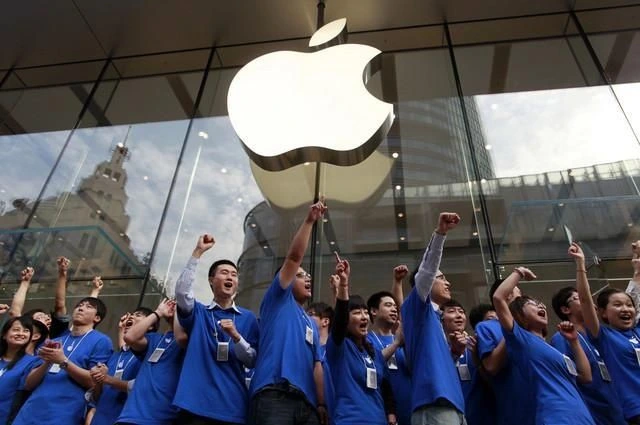
The Future—Even Tighter Chains
Apple isn’t done. The Vision Pro headset is coming—blending AR/VR with your iPhone and Mac. It needs your other devices to shine.
Apple’s next big thing? Health. Your watch will monitor your heart, blood sugar, and maybe mental health. Medical data that is personal makes switching even harder.
Apple Pay and Apple Card? Financial hooks.
Apple’s next AI tools? Personalized, private—but only if you stay in iCloud.
Should You Try To Escape?
There are ways out:
✅ Cross-Platform Tools: Use Google Drive, Spotify, WhatsApp, and Dropbox. They work anywhere.
✅ Pick Flexible Hardware: AirPods work with Android. Use a Fitbit instead of an Apple Watch.
✅ Migrate Carefully: Photos, contacts, calendars—Google makes this easier now.
✅ Embrace the Mix: Use a Windows PC with an iPhone or an Android with a Mac. Some people do this!
But you’ll sacrifice the magic glue.
Is The Trap So Bad?
Some traps are bad. This one? It mostly makes people’s lives better.
If the cost is higher but your data is safer, your experience smoother, and your resale value strong—is it really so bad?
Most people say no. They stay. They buy more.
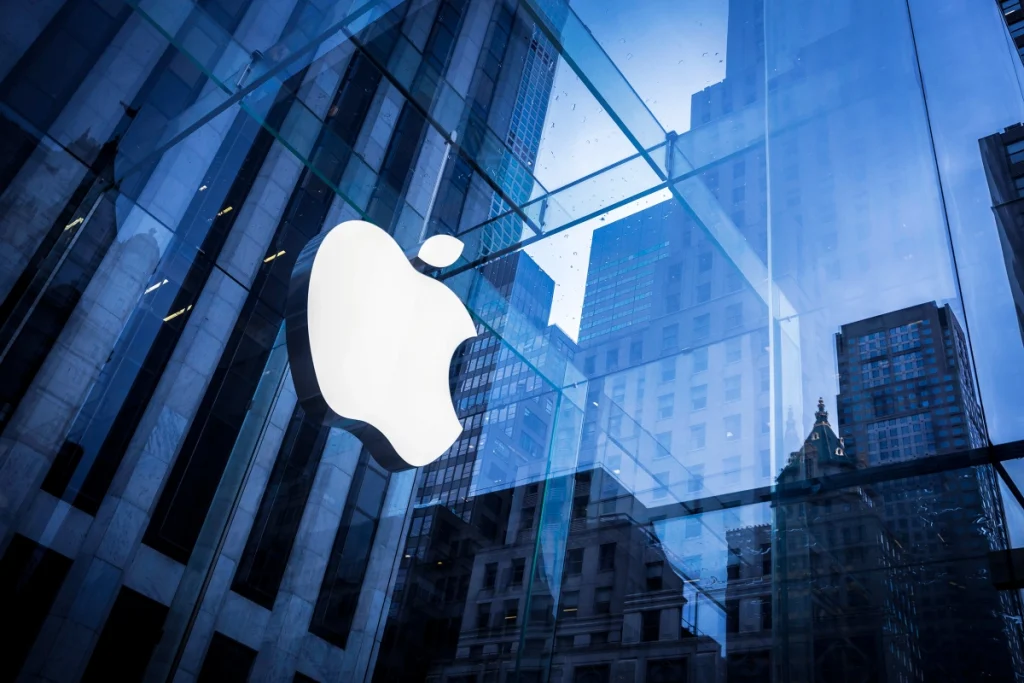
Conclusion: The Most Brilliant Trap Ever Set
When people talk about Apple’s success, they often say “beautiful design” or “premium hardware.” That’s only half the truth.
The real genius is how all the parts fit together—not just technically, but emotionally and psychologically.
Apple doesn’t lock you in with force. They lock you in with delight.
And the door out? Always open. Just hard to walk through.
🔑 Key Takeaway
You didn’t just buy a phone. You bought an experience. A world. A lifestyle.
And once you’re inside, you’re not trapped—you’re comfortable.
That’s the Apple Ecosystem.
A beautiful, brilliant trap.


